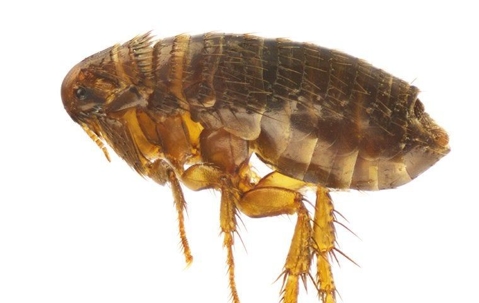Researchers associated with the Texas A&M University AgriLife Extension Service estimate that roughly nine billion dollars in expenses accrue annually across the U.S. for controlling fleas. Fleas are a type of small insect that feed exclusively on blood, which they source from humans and animals—particularly cats and dogs. Among the various species of these wingless pests, the cat flea (Ctenocephalides Felis) most often plagues Texans; however, other types include the dog flea, rat flea, and more.
What is the lifespan of a flea? Depending on the conditions, fleas in Del Rio might live for as little as several days up to several months. Fleas have a life cycle that passes through phases beginning as an egg and transitioning through stages as larvae and pupae before reaching adulthood.
Fleas land on passing animals using their jumping ability, where they generally will remain until becoming dislodged. Following their initial blood meal, females will promptly begin generating eggs—often dozens per day.
Are you facing an expanding flea infestation? Seeking assistance from a professional pest exterminator is typically the best option. An experienced Del Rio pest control company knows how to treat your house for fleas and will ensure that they fully eradicate the infestation.
How To Tell If You Have A Flea Infestation In Your Home
How to know if you have fleas in your house? When inside a home, fleas typically exist on or around furniture and pet beds. They usually bite humans in the lower body region, such as near the ankles and legs.
What do fleas look like on a bed? Within bedding materials, the feces of a flea are often most noticeable, appearing as dust in red or black colors. Cat fleas typically measure 1/8 of an inch as adults, appear brown or black, and are difficult creatures to view with the naked eye.
Why Having Fleas In Your Home Is A Health Risk
Fleas are problematic pests that cause substantial irritation and disease. Expect continual scratching among dogs or cats struggling with fleas. Some pets and people have harmful allergic reactions from flea bites. Humans with allergies may develop rashes or hives from exposure to fleas. Fleas may feed on rodents and other carriers of diseases, including bubonic plague, murine typhus, tularemia, and a host of other health-related concerns.
Why do fleas bite humans? Fleas consume blood and will feed on a human. Cat fleas and several others that most commonly target pets rarely live on humans; however, they often bite people who are handling an infected animal.
How do fleas bite? Equipped with claws, fleas will grasp a host and use their “needle-like” proboscis to pierce the skin and consume a blood meal.
Five No-Nonsense Flea Prevention Tips For Around Your Yard
Fleas are often initially exposed to a passing host, such as a human or animal, in natural outdoor environments, such as yards in residential areas.
Five of the best rodent prevention measures include:
- Trim the lawn regularly so that fleas will not use the tall grass as shade from the sun.
- Limit humidity by avoiding over-watering.
- Keep the yard free of piles of leaves or debris.
- Implement barriers as necessary to limit wildlife that carries fleas.
- Keep lids on exterior trash cans that will otherwise attract rodents.
Despite the effectiveness of the aforementioned flea prevention strategies, pet owners must ensure their animals remain on a flea and tick protection plan as advised by a licensed veterinarian.
The Most Effective Flea Control Solution For Your Yard
What is the best way to get rid of fleas that have entered your home and begun expanding their presence? Promptly contact the local professionals with Gold Star Exterminators - Del Rio for assistance. We look forward to hearing from you.

